NYC’s Forgotten ‘War on Christmas Trees’
Discover how an obscure holiday crackdown affects festive street vendors today!


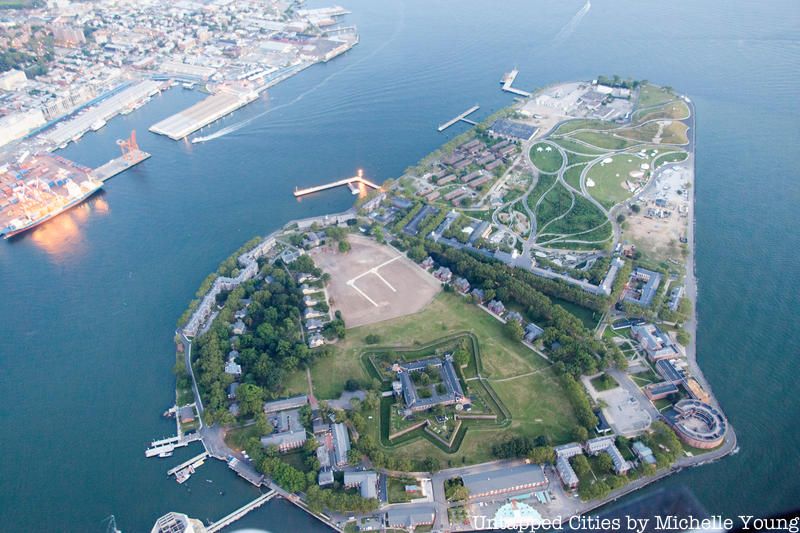
Governors Island has become a popular summer location for New Yorkers to take a day trip on the weekends. With spectacular views of Manhattan, open green spaces, and fun tours, it’s a perfect oasis from the daily grind of the city. This little getaway has a deep and rich history, starting with the native Lenape people who fished there and called it Paggank or Nut Island, for its hickory, oak, and chestnut trees. Dating back to the American Revolution, Governors Island was a vital strategic point given its location at the convergence of the East and Hudson Rivers. Today, it is a vibrant hub of arts and culture and a convenient place to soak up some nature. Any place with a complex history, we’ve learned, has plenty of good secrets to unearth. Here are our 10 favorite secrets of Governors Island:
You can explore the hidden gems of Governors Island on our upcoming walking tour!
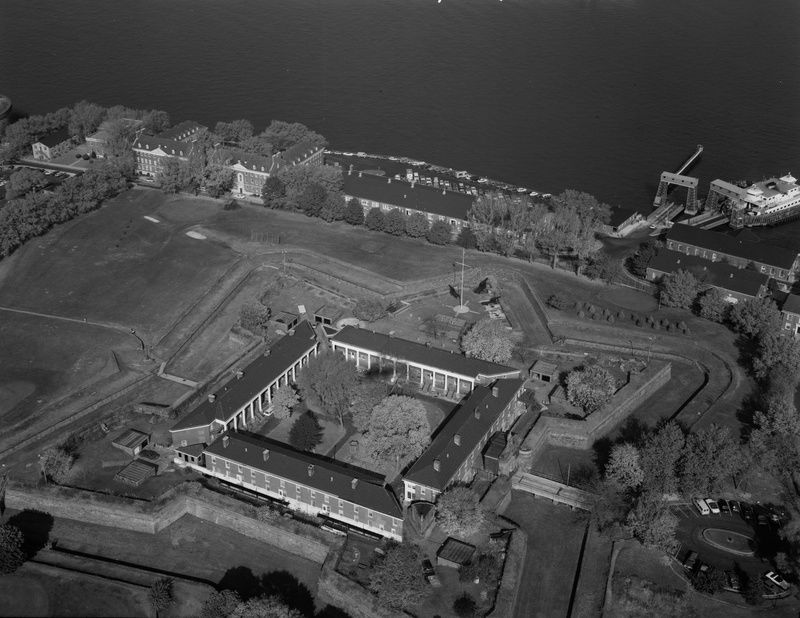
Golf first came to Governors Island in 1903. At that time, a three-hole course known as the Quadrangle was created behind the historic Fort Jay. Later, the course was expanded to nine holes. It was the only golf course in Manhattan since the island is technically part of that borough. As a 1925 New York Times article titled “Fort Jay Golf Offers Weird Hazards” points out, the Governors Island golf experience was unlike any other. Aside from the distraction of the absolutely gorgeous views of New York Harbor, the course itself was quite challenging. Golfers had to contend with typical course obstacles like sandtraps and water, but they also had to hit balls over parts of the fort on the par-3 course!
The island had many other sports facilities including softball and baseball fields, tennis courts, soccer and football fields, and a track as well. The Coast Guard used the golf course until they vacated the island in 1996. There was a short-lived mini-golf course on the island in the early 2000s.
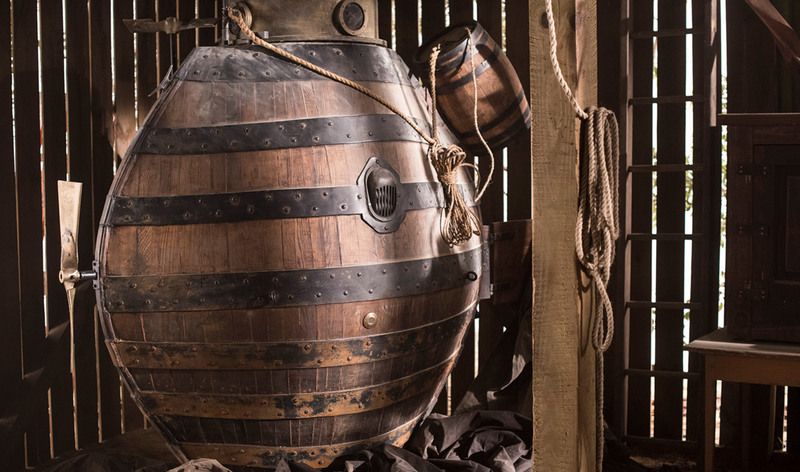
The Turtle was the first known submersible built for use in combat. It was constructed in Connecticut in 1775 by Yale freshman David Bushnell so that the Americans could attach explosives onto British ships, intended specifically for the protection of American troops in New York Harbor. On September 6, 1776, George Washington approved an attack on the HMS Eagle, which was moored off of Governors Island.
A sergeant Ezra Lee commanded the Turtle and made it all the way to the Eagle but was unable to attach the explosive. The Turtle was spotted by British soldiers on Governors Island, who rowed out into the harbor. Lee released the charge into the harbor which drifted into the East River and detonated “with tremendous violence,” according to Lee (although there have been no corroborating stories of this incident on the British side). A month later, after an attempt on another British vessel, the Turtle was sunk on a transport vessel off Fort Lee, New Jersey. In the AMC show TURN, a replica of The Turtle was built for a scene inspired by these true-life events.
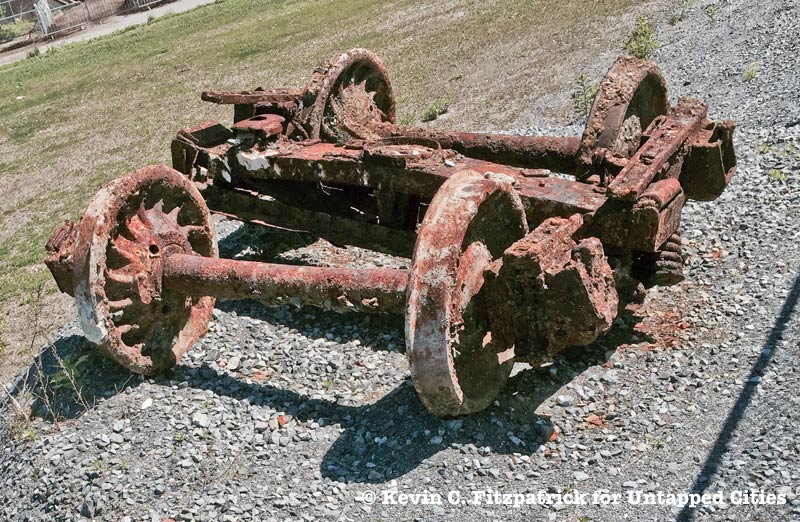
In 1918, the U.S. Army built a set of train tracks that was only one and a half miles long. Stretching from the pier to the warehouse, the line consisted of three cars used for carrying machinery and supplies. According to a 1931 Railroad Trans Magazine, this railroad was equipped with a regular crew, including a dispatcher and a track foreman.
You can see a map of the railroad tracks and historical images on this blog. There were actually three tracks that ran across the island and spurred off toward different buildings. The train relic scene above was unearthed on the island in 2014 while work was being done to create new stormwater outfalls.
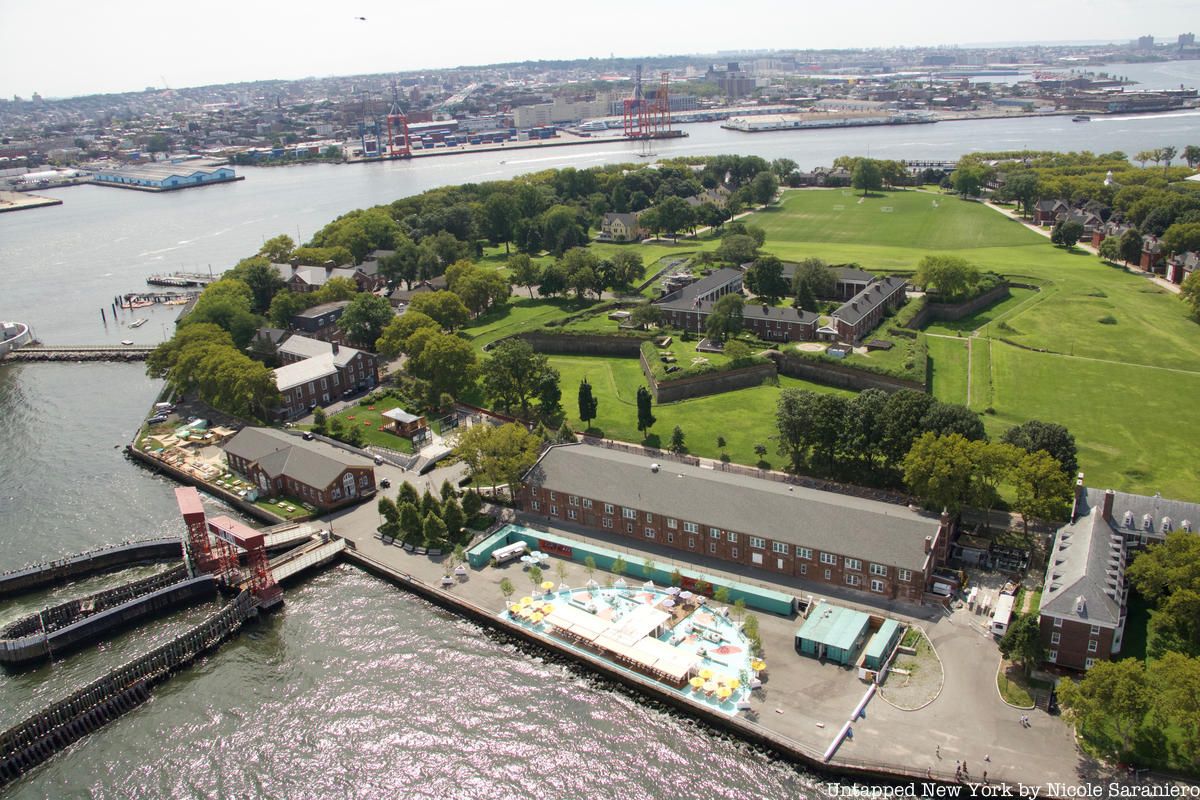
Similar to many parts of Manhattan, Governors Island is mainly comprised of landfill. In 1912, the island was expanded using rubble from the construction of the 4/5/6 subway lines. This Lexington Avenue landfill, roughly 182,000 cubic yards of fill, makes up the southern portion of the island, the cone its ice cream cone shape.
As reported by Architizer, there’s enough landfill in Governors Island to fill approximately 1,100 subway cars that could stretch from the northern tip of Manhattan to Battery Park. Find out what other parts of Manhattan are man-made!
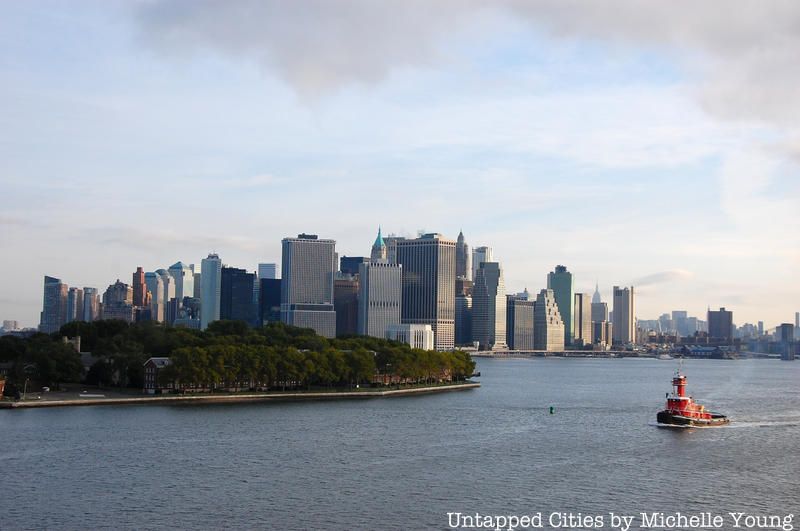
The small channel between Brooklyn and Governors Island, approximately one mile long and 1/4 miles wide, was once called Buttermilk Channel. There are a few different theories about how this channel received its name but we know it dates as far back as the Revolutionary War. Some believe farmers crossed the channel on foot with their cows because it was so shallow.
The cows would then graze on the island. Others believe its named Buttermilk because the channel was so choppy that when farmers crossed, their milk churned into butter by the time they reached the other side. According to amNewYork, the Governor’s House (which, ironically, was actually never home to a governor) is rumored to have a secret underground tunnel for an emergency exit to Brooklyn. However, there is no current evidence to support this claim.
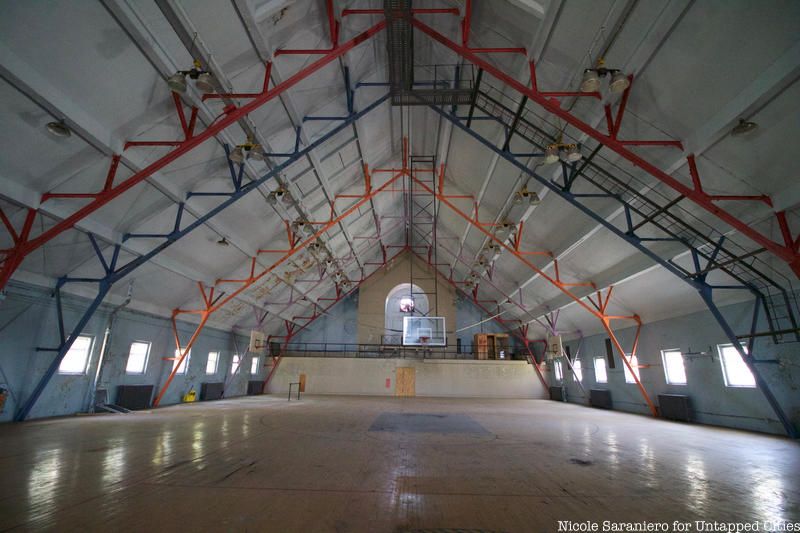
As we covered previously, there used to be a Burger King on Governors Island. Moreover, during the Coast Guard era (1966-1996), Burger King was attached to a bowling alley and sold beer! For $3.99 you could get a pitcher and for $2.10 you could buy yourself a cold 32-ounce.
In 2009, the publication Latitudes set up a temporary office base camp “in the former Dia Center building on 22nd Street, transposing daily operations while presenting our publications and other paraphernalia. The office-‘scenario’ was conceived by the New York-based artist group The Bruce High Quality Foundation, incorporating dining furniture from the abandoned 1983 Burger King facility on Governors Island,” the organization writes. The Burger King building, Building 785, was demolished.
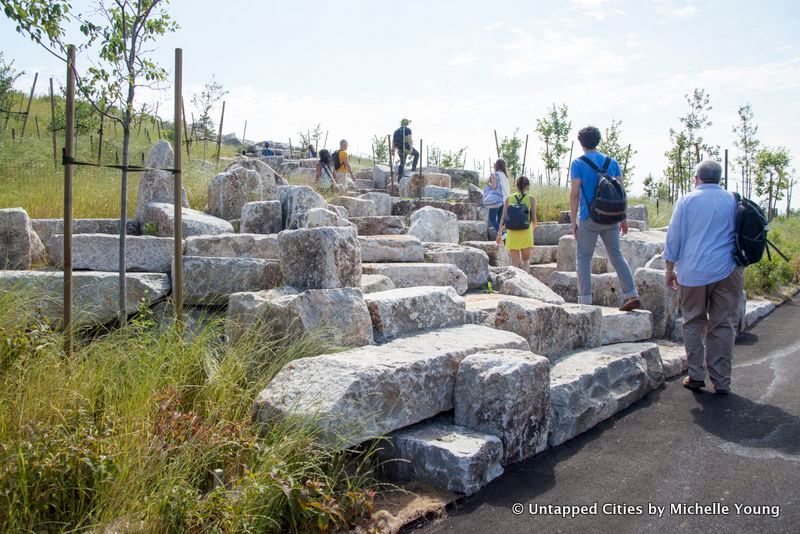
There are four hills that make up The Hills. The tallest, Lookout Hill, rises 70 feet above sea level. Slide Hill goes up 40 feet, Grassy Hill is 25 feet tall, and Discovery Hill reaches 40 feet. Discovery Hill has ornamental and experimental trees and plantings and a site-specific installation by British artist Rachel Whiteread. The park is designed by a Dutch firm, West 8 Urban Design and Landscape Architecture, a nice connection to the history of New York, which was settled by the Dutch.
The Hills are constructed from fill made out of the demolition of existing buildings on this part of the island, recycled materials, and steel slag from Perth Amboy. The materials were blended in South Jersey and barged into Governors Island (using 137 barges). 14 buildings were demolished on this end of the island and 100% of the materials were reused, amounting to about 50,000 cubic yards. The walls are from the former sea wall on Governors Island.
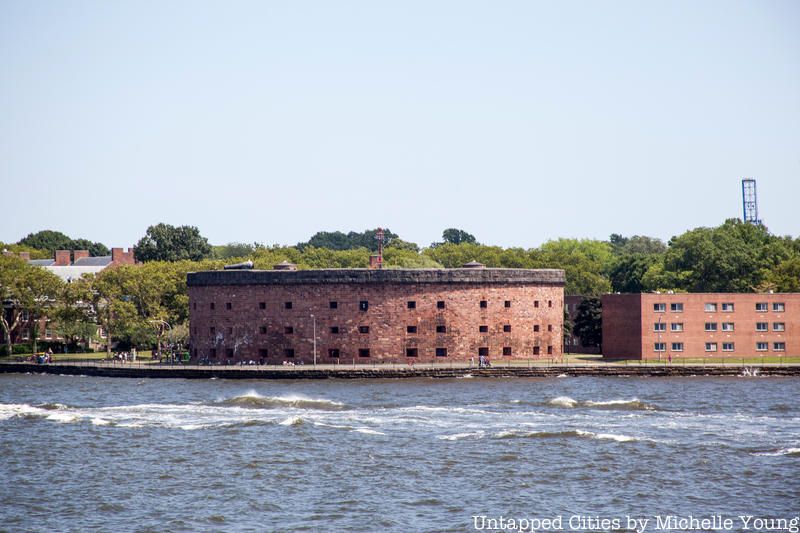
Castle Williams, on the west point of the island, stands as a circular defensive structure made of red sandstone. Constructed between 1807 and 1811, it was considered the prototype for modern fortifications. It served as a prison during the Civil War and again in 1903.
In 1966 when the Coast Guard wanted to demolish it, the castle was remodeled as a youth community center. Its prison cells were converted into nurseries, meeting rooms for Scouts and clubs, a woodworking shop, art studios, a photography laboratory, and a museum. Today the historic site is run by the National Park Service.
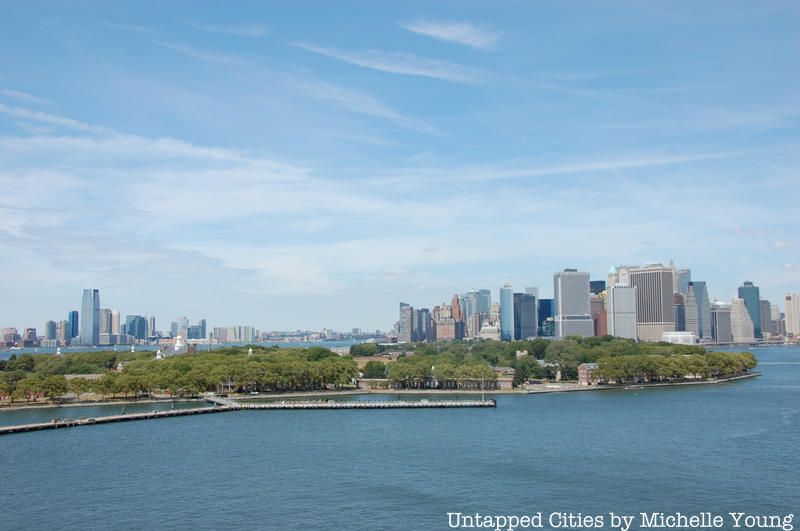
In 2003, after 200 years of federal control, Governors Island was sold to the state of New York for a whopping $1. Then Governor George Pataki literally handed a dollar bill to President Bush in front of the Statue of Liberty to seal the deal. Negotiations between the federal government and New York lasted for about 8 years before they finally settled on $1. The island was sold with the intention that it would be used for recreational and cultural purposes. Check out 9 other locations sold for $1 in New York City!
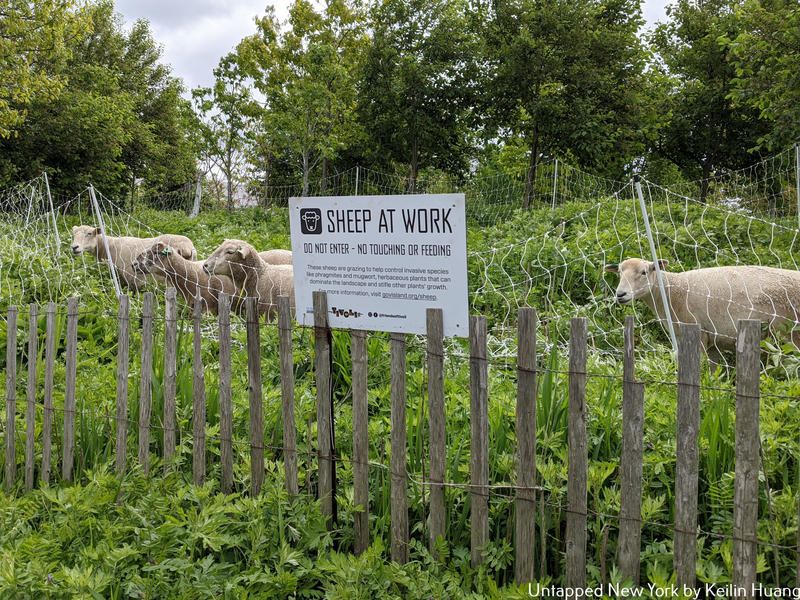
In many New York City parks, animals have been brought in to help maintain the landscape. On Governors Island, those four-legged helpers are sheep. These natural landscapers help to gently remove unwanted invasive species in the Hammock Grove area of the island. Their waste can even be used as fertilizer for the trees.
Explore more hidden gems and little-known secrets of Governors Island on our upcoming walking tour!
Next, check out Governors Island’s Haunted Basketball Court and Governors Island Camping Experience Allows you to Sleep Under the Stars
This article was written by Anne Guerra
Subscribe to our newsletter